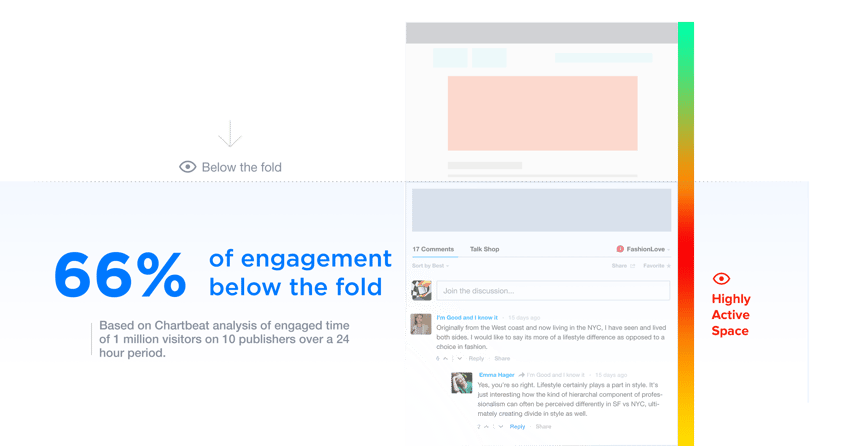I’m Jim, I’ve been working with startups since the mid-’90s, most recently helping publishers be more successful with Disqus. I may also be the most active commenter currently employed by Disqus.
If you want people to talk about your content, make it easy for them to do so.
There’s no publishing without an audience. If readers don’t show up, there is no opportunity to create value – whether that’s advertising, revenue, or readership enrichment. And it’s safe to say that accumulating and developing readership is central to publishing. If you’re a low-frequency blogger (I’m lookin’ in the mirror) or a large media company, growing your audience requires engagement. And there’s no better way to engage with them than through dialogue.

Commenting achieves that; it lets readers start a conversation with others, including the author. According to Chartbeat, 66% of engagement happens below the fold in the comments section.
It wasn’t so long ago that publishers were hesitant to link out to other sites for fear of losing their audience. And now we’re seeing some publishers removing their commenting platforms with the justification that the conversation is happening on social media (i.e. Twitter and Facebook). How is this not shipping the audience off site?
Audience development managers are keenly focused on boosting traffic, increasing time-on-site, and decreasing bounce rates. It’s hard to see how off-loading comments to social media doesn’t work against these objectives.
The best place for a conversation is the place where the content, author, and readers are all in one place. That’s the article page. It’s hard to airlift that conversation elsewhere. And it’s unclear to me why the conversation should exist outside of the context of the original content that initiated the conversation.
Don’t get me wrong. Sharing content across social media is a very important part of audience development. But it’s important to recognize that link sharing on Facebook or Twitter is not conversation – granted it can lead to conversation. However when it does, it’s disjointed and disaggregated; practically invisible to the reader on your article page.
The readers that comment are the most engaged readers. But they’re just the tip of the iceberg. On average, more than 50 percent of readers on a page will scroll down and view some portion of comments. Engaged readers (the most valuable readers as measured by time-on-site) want more, and they get it by reading the comments, which provides more information, additional insights, and valuable perspectives on the original article. These are the hallmarks of great content — content that should live and breath on a publisher’s site — content that creates, grows and maintains an engaged audience.
If you’re a publisher or media company grappling with this issue, leave a comment, I’d love to hear from you.
